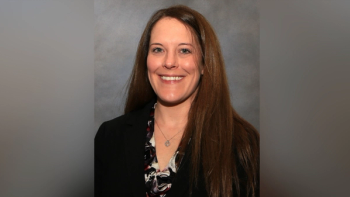
How Advance Provision, OTC Access to Abortion Medication Changed Pre- and Post-Dobbs Ruling
A cross-sectional study investigates the impact of Dobbs v Jackson’s Women’s Health Organization on national support and personal interest.
In June 2022, the US Supreme Court overturned the constitutional right to abortion in Dobbs v Jackson’s Women’s Health Organization, resulting in a change in abortion access, as individual states began enacting either total or near-total abortion bans.1,2
Even prior to this ruling, COVID-19 played its role in altering the landscape, with the FDA removing the in-person dispensing requirement for mifepristone in April 2021. Since that time, individuals have been seeking out other ways to receive care, including telehealth and other care models, such as advance provision (AP)—where a clinician would give patients mifepristone and misoprostol meds prior to pregnancy for later use—and over-the-counter (OTC) access to abortion medication.
Given this timeline, a study published in JAMA Network Open3 sought to measure how people’s interest in AP and OTC medication access changed between the timeframes prior to and after the Dobbs ruling among individuals who self-reported being assigned female at birth (AFAB).
In data analyzed from February 2023 to June 2024, two cross-sectional, online surveys—one being pre-Dobbs (December 2021 to January 2022) and the second being post-Dobbs (June to July 2023)—were distributed by a market research firm to AFAB individuals 15-49 years of age.
After this was completed, 6,982 AFAB people prior to Dobbs and 3,561 after Dobbs were noted as concluding at least 1 of the 4 primary outcome measures. Results indicated that from before to after Dobbs, 2,666 (weighted 31.3%) and 1,258 (weighted 30.1%) were aged 30 to 39 years of age; 1,395 (21.4%) and 708 (21.5%) self-reported their race and ethnicity as Hispanic/Latinx, 594 (13.7%) and 304 (13.6%) as Black non-Hispanic/Latinx, and 4,504 (54.6%) and 2,270 (54.2%) as White non-Hispanic/Latinx.
The study authors noted a significant rise from before to after Dobbs in the national support for AP (48.9% before; 95% confidence interval CI, 47.1% to 50.6%; 55.1% after; 95% CI, 52.8% to 57.3%) and OTC access (49.4% before; 95% CI, 47.6% to 51.1%; 55.2% after; 95% CI, 52.9% to 57.5%), and an increase in personal interest in AP (23.6% before; 95% CI, 22.2% to 25.1%; 26.4% after; 95% CI, 24.3% to 28.4%) and OTC access (36.0% before; 95% CI, 34.3% to 37.6%; 42.5% after; 95% CI, 40.2% to 44.7%).
As for those residing in states who had enacted abortion bans, larger boosts in personal interest in AP (5.3 percentage points [pp]; 95% CI, 0.5 to 10.3 pp) and OTC access (9.4 pp; 95% CI, 3.9 to 14.9 pp) were perceived, compared to people living in states who did have abortions bans (1.4 pp; 95% CI, −1.7 to 4.6 pp and 5.4 pp; 95% CI, 2.0 to 8.9 pp, respectively).
“In this serial cross-sectional national study of AFAB people aged 15 to 49 years, we found that national support for and interest in expanded access to medication abortion has increased, particularly for people living in restrictive settings and those marginalized by the healthcare system,” the study investigators concluded. “These findings suggest that AP and OTC access to medication abortion offer two promising approaches to abortion care.
“Future research should further examine the safety, acceptability, appropriateness, adoption, and feasibility of implementing these models of care. Given the high level of interest and support for AP and OTC access, policymakers and regulators should support and facilitate the research needed for the approval of an OTC product—as well as prioritize policies that will ensure that both AP and OTC products are covered by insurance—so that these approaches can become broadly available to the general public.”
References
1. Aiken ARA, Starling JE, Scott JG, Gomperts R. Requests for self-managed medication abortion provided using online telemedicine in 30 US states before and after the Dobbs v Jackson Women’s Health Organization Decision. JAMA. 2022;328(17):1768-1770. doi:
2. Society of Family Planning. WeCount Report 7. 2024. Accessed December 3, 2024.
3. Biggs MA, Schroeder R, Kaller S, Grossman D, Scott KA, Ralph LJ. Changes in Support for Advance Provision and Over-the-Counter Access to Medication Abortion. JAMA Netw Open. 2025;8(1):e2454767. doi:
Newsletter
Stay ahead in the life sciences industry with Pharmaceutical Commerce, the latest news, trends, and strategies in drug distribution, commercialization, and market access.





